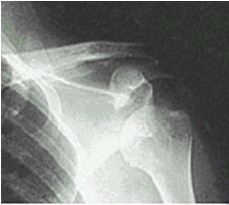Dislocations (Shoulder, Jaw, Elbow, Finger)
Dislocations (Shoulder, Knee Cap, Elbow, Finger)
A joint is the place where your bones come together. Normally, bones glide smoothly within your joints, allowing a wide range of motion. But a bone can be pushed or pulled out of position. This is known as a dislocation. Dislocation prevents normal joint movement and can be very painful. Prompt treatment is crucial.
Causes of dislocations
Dislocations can happen to almost any joint. But they're most common in the shoulder, knee cap, elbow, and finger. Dislocated elbows happen most often in children. Many dislocations result from injury, such as a blow or fall. But some can happen during normal activities. A shoulder can dislocate during the act of throwing a ball.
When to go to the emergency room (ER)
A dislocation needs emergency care. Injuries that aren`t treated promptly take longer to heal and may result in lasting damage to the joint. Seek medical help right away if you:
Have severe pain in a joint
Can't move the joint normally
Can see the misplaced bone
Have numbness or tingling
Have a break in the skin over the painful joint
What to expect in the ER
You will be given pain medicine to make you more comfortable.
The joint will be examined and an X-ray may be taken to check for fractures or other injuries.
To restore normal alignment, the joint is gently and slowly maneuvered back into proper position. You will receive pain medicine before this procedure.
A dislocated finger or elbow may be splinted to keep it from moving while it heals. An injured shoulder may be placed in a sling.
A second X-ray may be done before you leave the hospital.
In most cases, you will be referred to a bone specialist (orthopedist) or a primary care sports medicine healthcare provider for follow up evaluation and treatment.
Reduce swelling and pain due to a dislocation
Tips to reduce swelling and pain:
Apply ice to the joint (keep a thin cloth between the ice and your skin).
Raise the injured area above heart level if you can.
Updated:
May 11, 2018
Sources:
Digit Dislocation Reduction. UpToDate, Recognition and initial management of lateral patellar dislocations. UpToDate
Reviewed By:
Joseph, Thomas,N., MD,Sather, Rita, RN
